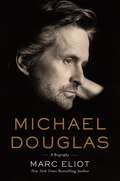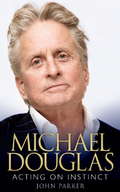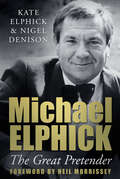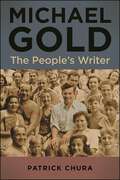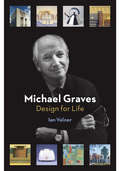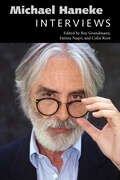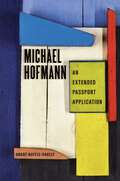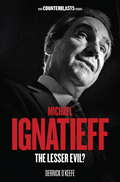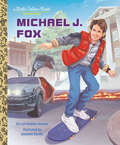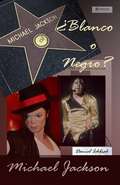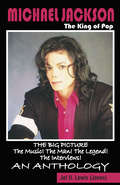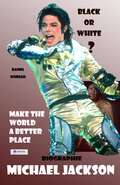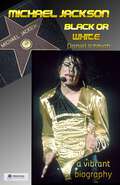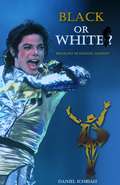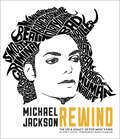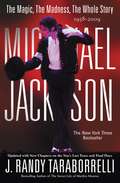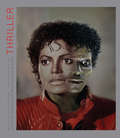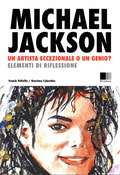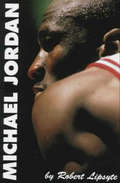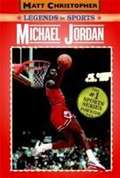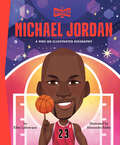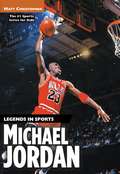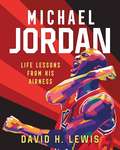- Table View
- List View
Michael Douglas: A Biography
by Marc EliotThrough determination, inventiveness, and charisma, Michael Douglas emerged from the long shadow cast by his movie-legend father, Kirk Douglas, to become his own man and one of the film industry's most formi dable players. Overcoming the curse of failure that haunts the sons and daughters of Hollywood celebrities, Michael became a sensation when he successfully brought One Flew Over the Cuckoo's Nest, starring his friend Jack Nicholson, to the screen after numerous setbacks, including his father's own failed attempts to make it happen. This 1975 box-office phenomenon won Michael his first Oscar (the film won five total, including Best Picture), an award Kirk hadn't won at the time, and solidified the turbulent, competitive father-son relationship that would shape Michael's career and personal life. In the decades that followed, Michael established a reputation for taking chances on new talent and proj ects by producing and starring in the hugely successful Romancing the Stone and Jewel of the Nile movies, while cultivating a multifaceted acting persona edgy, rebel lious, and a little dark in such films as Wall Street, Fatal Attraction, Basic Instinct, and Disclosure. Yet as his career thrived, Michael's personal life floundered, with an unhappy and tumultuous first mar riage, rumors of infidelity (especially with leading ladies such as Kathleen Turner), and a headline-grabbing stint in rehab. Rocked by a series of tragedies, including Kirk's strokes, his son Cameron's incarceration, and his own fight against throat cancer, Michael has emerged trium phant, healthy, and happy in his marriage to Catherine Zeta-Jones, a Welsh actress twenty-five years his junior, and their new young family. In Michael Douglas, Marc Eliot brings into sharp fo cus this incredible career, complicated personal life, and legendary Hollywood family. Eliot's fascinating portrait of the lows and remarkable highs in Michael's life in cluding the thorny yet influential relationship with his father breaks boundaries in understanding the life and work of a true American film star.
Michael Douglas: Acting on Instinct
by John ParkerIn the shadow of his father Kirk's overpowering fame, Michael Douglas forged a career for himself and became recognised in his own right as an award-winning actor and producer. But fame has taken its toll on Michael's personal life. His struggles with sexual addiction, his treatment for alcoholism and drug dependency and the break-up of his first marriage show another side to Michael's success. In 2010, his troubled past came back to haunt him when Cameron, his eldest son, was sentenced to five years in prison for drug dealing. Yet, despite a rocky road, Michael has found happiness later in life. His marriage to Catherine Zeta Jones meant a second shot at fatherhood and gave him strength following a devastating diagnosis of advanced throat cancer at the age of 65. This is the compelling and remarkable story of a Hollywood son who waged a battle against the odds to achieve his fame and fortune, and has kept on fighting with every challenge he faces.
Michael Douglas: Acting on Instinct
by John ParkerIn the shadow of his father Kirk's overpowering fame, Michael Douglas forged a career for himself and became recognised in his own right as an award-winning actor and producer. But fame has taken its toll on Michael's personal life. His struggles with sexual addiction, his treatment for alcoholism and drug dependency and the break-up of his first marriage show another side to Michael's success. In 2010, his troubled past came back to haunt him when Cameron, his eldest son, was sentenced to five years in prison for drug dealing. Yet, despite a rocky road, Michael has found happiness later in life. His marriage to Catherine Zeta Jones meant a second shot at fatherhood and gave him strength following a devastating diagnosis of advanced throat cancer at the age of 65. This is the compelling and remarkable story of a Hollywood son who waged a battle against the odds to achieve his fame and fortune, and has kept on fighting with every challenge he faces.
Michael Elphick: The Great Pretender
by Neil Morrissey Kate Elphick Nigel DenisonMichael Elphick was a young electrician working at the Chichester Theatre when he was discovered by Laurence Olivier, who arranged for him to join the Central School of Drama. It was here where he met Bruce Robinson, who would later cast him in one of the most popular British films of all time – Withnail and I. Elphick’s illustrious career also included major supporting roles in films such as Quadrophenia, The Elephant Man, Gorky Park and Dennis Potter’s Blue Remembered Hills. On television, there was Private Schultz and Boon, which gave his acolyte and friend, Neil Morrissey, his first starring role. One of his characters’ owned houses in Coronation Street whilst another wooed Peggy Mitchell in Eastenders. However, Elphick’s private life was every bit as varied as his acting career. Racked by alcoholism and devastated by the early death of his partner, Julia, Elphick died at the age of 55. And yet, his friends and family will always remember his hugely humorous personality, and everyone he met was left with a ‘Mike Elphick story’...
Michael Gold: The People's Writer (SUNY series in Contemporary Jewish Literature and Culture)
by Patrick ChuraWinner of the 2022 Literary Encyclopedia Book Prize presented by the Literary EncyclopediaWinner of the 2022 Paul Cowan Non-Fiction Award presented by the Peace Corps WorldwideJewish American Communist writer and cultural figure Michael Gold (1893–1967) was a key progressive author of his generation, yet today his work is too often forgotten. A novelist, essayist, playwright, poet, journalist, and editor, Gold was the leading advocate of leftist, proletarian literature in the United States between the two world wars. His acclaimed autobiographical novel Jews without Money (1930) is a vivid account of early twentieth-century immigrant life in the tenements of Manhattan's Lower East Side. In this authoritative biography, Patrick Chura traces Gold's story from his impoverished youth, through the period of his fame during the "red decade" of the 1930s, and into the McCarthy era, when he was blacklisted and forced to work menial jobs to support his family. In his time as a radical writer-activist, Gold courageously helped strikes, protested against war and fascism, worked for the Unemployed Councils, walked in hunger marches and May Day parades, got arrested in support of Sacco and Vanzetti, raised money for workers' cooperatives and leftist journalism, and demonstrated against nuclear weapons and in support of fair housing, the Rosenbergs, and civil rights. This biography welcomes Gold back into cultural conversations about art, literature, politics, social change, and Jewish American life in the twentieth century.
Michael Graves: Design for Life
by Ian VolnerOne of the most prominent and prolific designers and architects of the late twentieth century, Michael Graves is best known for his popular product designs, including the world-famous Alessi whistling-bird teakettle, and controversial buildings, such as the Portland Building in Oregon, Humana Building in Kentucky, and Dolphin and Swan Hotels at Walt Disney World, Florida. Graves was widely seen as the leading voice of postmodernist architecture, which reintroduced human scale, color, and, sometimes, playful forms into the stark white vocabulary of modernism. Following a devastating illness that paralyzed him from the chest down, Graves became a tireless designer and advocate of improved health-care products and facilities before his sudden death in 2015. Shortly before this, he began a series of interviews with journalist Ian Volner, which form the basis of this biography of a remarkable designer. Volner also conducted numerous interviews with Graves's family, patrons, colleagues, and friends. What emerges is a meticulously researched, anecdote-rich human story, as well as a primer on the American architecture scene of the past sixty years and a portrait of a man whose deep passion for his art brought pleasure to millions.
Michael Haneke: Interviews (Conversations with Filmmakers Series)
by Roy Grundmann, Fatima Naqvi, and Colin RootSpanning five decades and twenty-four films, director Michael Haneke’s career is one of the most significant in the history of European art cinema. However, critical reception has long lagged behind his output. By the time Haneke (b. 1942) emerged into the international spotlight as a cinematic visionary with the 1989 Cannes premiere of The Seventh Continent, he had worked in filmmaking for two decades, producing seven feature-length films. As many of his films aired solely on Austrian and German television, they remained unknown to audiences outside the German-speaking world until 2007, when the first comprehensive Haneke retrospective took place in the United States. Michael Haneke: Interviews presents some of Haneke’s most profound interviews to English speakers. The volume features seventeen articles, fourteen of which have been translated into English for the first time, and all of which provide a detailed, eloquent commentary on his films and worldview. This book represents the most extensive collection to date of interviews with the filmmaker, spanning his entire oeuvre—from his earliest television films to his so-called “Glaciation Trilogy” of the 1990s, from the notorious dark satire Funny Games to its similarly notorious 2007 Hollywood remake, and from his French films of the 2000s to his Oscar-winning drama, Amour, and his most recent feature, Happy End.
Michael Hofmann: An Extended Passport Application
by André Naffis-SahelyFor more than four decades, Michael Hofmann has made significant contributions to the literary cultures of Germany, the United Kingdom, and the United States, ranging from his original poetry to translations of Kafka, Brecht, Hans Fallada, and Joseph Roth, among others. In the first book-length study of this iconic figure, poet and translator André Naffis-Sahely surveys Hofmann’s life and work with an emphasis on his poetry, situating him within the “New Generation” of writers, including Carol Ann Duffy, Simon Armitage, and Don Paterson, who rose to prominence in Britain between the mid-1980s and the early 1990s. Reaffirming Hofmann’s central place in contemporary literature, Naffis-Sahely presents the author’s oeuvre as an “extended passport application,” as the poet’s unusually peripatetic nature emerges as a poetic means of questioning various modes of authority. Naffis-Sahely examines Hofmann’s chief literary influences, revealing that while he was heavily inspired by the example of Robert Lowell’s confessional model, his work was equally shaped by other poetic mentors, including Ian Hamilton and Hugo Williams. In turn, Hofmann’s five published volumes of poetry—from his debut Nights in the Iron Hotel to his latest collection, One Lark, One Horse, published after a silence of two decades—chronicle the poet’s sentimental and intellectual education from adolescence to middle age, as well as the traumatic emotional experiences that arose from his relationship with his father, the German novelist Gert Hofmann, whom the poet portrayed to shocking effect in his breakthrough second collection, Acrimony. Naffis-Sahely concludes his study with an analysis of the influence Hofmann has exerted on other poets, testifying to the value and importance of his work in the contemporary British tradition, followed by an extensive interview reflecting on his career.
Michael Ignatieff
by Derrick O'KeefeOne of the most influential intellectuals in the English-speaking world, Michael Ignatieff's story is generally understood to be that of an ambitious, accomplished progressive politician and writer, whose work and thought fit within an enlightened political tradition valuing human rights and diversity. Here, journalist Derrick O'Keefe argues otherwise. In this scrupulous assessment of Ignatieff's life and politics, he reveals that Ignatieff's human rights discourse has served to mask his identification with political and economic elites.Tracing the course of his career over the last thirty years, from his involvement with the battles between Thatcher and the coal miners in the 1980s to the Balkan Wars of the 1990s, Iraq, Afghanistan, and Israel's 2009 invasion of Gaza, O'Keefe proposes that Ignatieff and his political tradition have in fact stood in opposition to the extension of democracy and the pursuit of economic equality. Michael Ignatieff: The Lesser Evil? is a timely assessment of the Ignatieff phenomenon, and of what it tells us about the politics of the English-speaking West today.From the Trade Paperback edition.
Michael J. Fox: A Little Golden Book Biography (Little Golden Book)
by Lori Haskins HouranGet inspired by Michael J. Fox, the beloved Back to the Future actor from Canada who is helping people all around the world, with this collectible Little Golden Book featuring full-color illustrations on every page!Michael moved to California—1,300 miles away from home—to be a Hollywood star!Actor Michael J. Fox is known for playing Alex P. Keaton on TV's Family Ties and Marty McFly in the Back to the Future movies. The talented actor became a determined activist after being diagnosed with Parkinson's Disease and starting a foundation to help find a cure. Michael J. Fox: A Little Golden Book Biography will inspire readers of all ages. Look for more Little Golden Book biographies:• Bruce Springsteen• Dwayne Johnson• Steve Martin• Zendaya• Harry Styles
Michael Jackson ¿Blanco o Negro?: Michael Jackson ¿Blanco o Negro?
by Daniel IchbiahDescripción De todas las estrellas que aparecieron después de muchas décadas, Michael Jackson era la más fascinante, esa que nos lleva casi que a hacerle un análisis inmediato. Con un increible talento, capaz de poner en escena espectáculos de una extraña naturaleza, de componer éxitos memorables, de transformar su cuerpo de una manera horrorosa, Michael Jackson ha cautivado el público por sus cualidades artísticas. En contraste, ese mismo público ha debido aceptar las excentricidades de un personaje inigualable, un tipo de héroe salido de un cuento de hadas, ese quien se ha descarrilado en el camino. Esta historia contendrá lo esencial: ¨ Billy Jean ¨, ¨ Thriller ¨, ¨ Don’t stop till you get enough ¨ y otras canciones que se convirtieron en clásicos los cuales se niegan a desaparecer con el transcurrir del tiempo… Como ha dicho otro maestro del arte, Steven Spielberg: ¨Como él no habrá jamás; un Fred Astaire u otros como Chuck Berry o Elvis Presley, no existirá una persona que se pueda comparar con Michael Jackson.¨ ¨Su talento, su vivacidad y su lado misterioso hacen de él una leyenda...¨
Michael Jackson The King of Pop: The Big Picture, The Music! The Man! The Legend! The Interviews! An Anthology.
by Tony Rose Yvonne Rose Jel Jones The Printed Page, Interior & Cover DesignMichael Jackson In Charge! Remember the Times! Remember the Music! Remember Motown 25! Remember the Dance! Get Ready to get Swept Away in a Run-Away Success Story about a Megastar who Started at the Top of the Charts more than 30 years Ago, and is Still Riding High after his untimely death in 2009!
Michael Jackson – Black or White
by Daniel IchbiahVon allen Bühnenstars der letzten Jahrzehnte ist und bleibt Michael Jackson der faszinierendste, derjenige, der ihm wahrsten Sinne des Wortes aus der Reihe tanzt. Ein wahres Talentbündel, fähig, Shows von seltener Qualität zu inszenieren, Hits für die Ewigkeit zu schreiben, seinen Körper im galaktischen Moonwalk zu bewegen, verführte der 'King of Pop' die Öffentlichkeit zunächst mit seiner Genialität als Künstler. Andererseits musste dasselbe Publikum die exzentrischen Spleens einer Kunstfigur akzeptieren; denn fast hätte es den wie aus einem Märchen entstiegenen Helden auf seinem Weg nach oben aus der Bahn geworfen. Was dennoch bleibt, ist die Essenz seines Erfolgs: 'Billy Jean', 'Thriller', 'Don't stop till you get enough' und andere Songs, die zu Klassikern geworden sind und die Zeit überdauern werden... Steven Spielberg, ein anderer Meister seiner Kunst, drückte dies mit folgenden Worten aus: « Genauso wie es nie einen weiteren Fred Astaire oder einen weiteren Chuck Berry oder einen weiteren Elvis Presley geben wird, wird es nie mehr jemanden wie Michael Jackson geben. » « Sein Talent, seine Lebendigkeit und seine geheimnisvolle Seite machen ihn zu einer Legende... »
Michael Jackson, Black or White ?
by Daniel IchbiahA vibrant biography of Michael Jackson, the King of Pop, from his earliest years to his tragic death.
Michael Jackson, Black or White: Biographie De Michael Jackson
by Daniel IchbiahEntre todas as estrelas que surgiram em várias décadas, Michael Jackson permanece a mais fascinante, aquela que mais escapa à análise imediata. Pleno de talento, capaz de encenar espetáculos de rara qualidade, de escrever canções eternamente memoráveis, de mover seu corpo duma maneira desconcertante, desde o início Michael Jackson seduziu o público pelas suas qualidades artísticas. Em contrapartida, esse mesmo público precisou aceitar as excentricidades incomuns dum personagem que resta inclassificável, espécie de herói retirado dum conto de fadas, destrambelhado no caminho. Resulta que a História reterá o essencial : Billy Jean, Thriller, Don’t stop till you get enough e outras canções que se tornaram clássicas, destinadas a resistir ao desgaste do tempo... Como declarou outro mestre em sua arte, Steven Spielberg : « Assim como não haverá jamais outro Fred Astaire, ou outros Chuck Berry ou Elvis Presley, jamais haverá alguém comparável a Michael Jackson. Seu talento, sua vivacidade e seu lado misterioso fazem dele uma lenda... » Este livro conta a vida de Michael : concentra-se nos principais episódios de sua vida e descreve a evolução do cantor. Ele conta o making off de Thriller, o álbum de todos os recordes. Também inclui retratos de Quincy Jones, Janet Jackson e LaToya. Por que um gênio da música pop se tornou um personagem enigmático, em busca de uma identidade paralela?
Michael Jackson: The Life & Legacy of Pop Music's King
by Daryl EasleaRelive the incredible history of the King of Pop in reverse. Michael Jackson: Rewind charts the life to Michael from his tragic, unexpected passing to his childhood.By the time Michael Jackson passed away in 2009, he had sold an estimated 750 million records worldwide over his career. He had won 26 American Music Awards and 13 Grammy Awards as well as the Grammy Lifetime Achievement Award, and was ranked number three, after The Beatles and Elvis Presley, of best-selling music artists. Five years after his death, the net worth of his estate is more than 600 million dollars. He is, without a doubt, one of the most popular - and controversial - artists of all time. Now, for the first time ever, author Daryl Easlea will explore the life and history of Michael Jackson... in reverse. Starting with his tragic death and rewinding to his early hits with the Jackson 5 and life in Gary, Indiana, this is a complete illustrated history of the King of Pop: his genius, his life, and his demons. Loaded with over 300 images, a timeline of his life, a complete discography, and more, this is the must-have book for any Michael Jackson fan.
Michael Jackson: The Magic, The Madness, The Whole Story, 1958-2009
by J. Randy TaraborrelliAfter 30 years of interviews with the Jackson family, this book is a behind the scenes look.
Michael Jackson: The Making of "Thriller"
by Douglas KirklandMichael Jackson: The Making of "Thriller" is an illustrated tribute to the King of Pop and his groundbreaking music video, with never-before-seen photos of its creation. The book features over 200 exclusive, behind-the-scenes photographs of the artist on set during the 1983 production of the Grammy award winning video directed by John Landis. Considered to be the most successful project of all time, "Thriller" is beloved the world over, inspiring imitation and a cult-like following of millions of fans. Documenting the creation of the most popular and iconic music video of all time, this book celebrates the artist and his music at the top of his career. Famed photographer Douglas Kirkland and journalist Nancy Griffin were the only members of the media allowed on the set of the video. The resulting photos capture Jackson both in high performance mode and relaxing on the set and depict his transformation into the characters in the video as well capturing the public and private faces of Michael Jackson. Compelling, intimate photos of the artist are accompanied by interviews and quotes from musicians and celebrities, including Sir Paul McCartney, Diddy, Beyonce, Steven Spielberg and many more. With a holographic cover that, when tilted, transforms the artist into his zombie character, the book is an impressive gift to be treasured by fans and music lovers everywhere.
Michael Jackson: un Artista eccezionale, o un Genio? Elementi di riflessione.
by David Abraham Franck VidiellaAnalizzando la carriera di Michael Jackson, Franck Vidiella mette in dubbio la natura sensitiva del termine di "Genio". Basata su una ricerca che conferma il fatto che i grandi genii sono, quasi totalmente, creativi, brillanti, ostinati e pluri-faccettati, ognuna delle tematiche viene analizzata studiando la carriera della Pop Star, in modo tale da offrire elementi per rispondere alla seguente domanda: Era Michael Jackson un'artista eccezionale o un Genio assoluto? La risposta, come potrete vedere, permette un dibattito appassionato.
Michael Jordan
by Robert LipsyteMichael Jordan was a late bloomer.Cut from the Varsity basketball team in high school when he first tried out, Michael nonetheless became the best basketball player that ever lived-Rare Air Jordan.The true story of how Michael Jordan achieved this amazing level of success as a basketball player-and as the high king of commercial endorsements-underscores one of the new roles of athletes in our society today.Here's a fascinating look at both the evolution of basketball and Michael Jordan's stunning climb to the peak of his sport, and his season in minor league baseball.
Michael Jordan
by Robert LipsyteMichael Jordan was a late bloomer.Cut from the Varsity basketball team in high school when he first tried out, Michael nonetheless became the best basketball player that ever lived--Rare Air Jordan.The true story of how Michael Jordan achieved this amazing level of success as a basketball player--and as the high king of commercial endorsements--underscores one of the new roles of athletes in our society today.Here's a fascinating look at both the evolution of basketball and Michael Jordan's stunning climb to the peak of his sport, and his season in minor league baseball.
Michael Jordan (Legends in Sports Series)
by Matt Christopher Stephanie PetersMatt Christopher, the number one sports writer for kids, profiles basketball superstar Michael Jordan, covering his childhood, college career, rookie years, professional career highlights, and his short stint in minor league baseball. This reissue features an update, following Jordan from his re-entry into basketball as a player for the Washington Wizards to his third and final retirement announcement.
Michael Jordan: A Who HQ Illustrated Biography (Who HQ Illustrated Biographies)
by Ellen Labrecque Who HQFollow the life of one of the greatest basketball players of all time!Learn all about Michael Jordan&’s life and career in this illustrated book! Filled with all the iconic hallmarks of a Who HQ title, sports fans will have a chance to learn new things about their favorite player or discover him for the first time!
Michael Jordan: Legends in Sports (On the Court with…)
by Matthew F ChristopherMichael Jordan. The name conjures up images of buzzer-beating jump shots, gravity-defying slam dunks, and precision ballhandling. For over a decade, Michael Jordan has been showing the world how the game of basketball should be played. He led his former team, the Chicago Bulls, to six NBA championships and has racked up more awards than any player in recent NBA history. The winner of two Olympic gold medals, a onetime minor-league baseball player, and the most recognized athlete in professional sports today, Michael Jordan continues to make us believe that humans can fly. In this exciting biography, Matt Christopher, the number one sports series for children, goes on the court for an inside look at the triumphs and tragedies, the struggles and statistics, of superstar Michael Jordan.
Michael Jordan: Life Lessons from His Airness
by David H. LewisFrom author David H. Lewis and illustrator Gilang Bogy, Michael Jordan: Life Lessons from His Airness contains the secrets to success from the greatest basketball player of all time.“Sometimes a winner is just a dreamer who never gave up.”Michael Jordan defied gravity, transcended the world’s expectations, and exceeded the limits of age, soaring to fame as the world’s greatest basketball player of all time. While his talent was breathtaking to behold—those flying dunks and record-breaking 60-point games have inspired generations—the unseen forces behind his success are the kind we can all harness for our own. M. J. and his accomplishments were founded on discipline, hard work, and knowing how to channel the deep, competitive drive within. Michael Jordan: Life Lessons from His Airness offers a courtside seat to the wild ride that made Michael Jordan a star and reveals valuable insights for anyone trying to make their own lofty dreams come true. - Powerful quotes from the one and only Michael Jordan, His Airness - An in-depth look at Jordan’s early years, his rise to fame, and his most spectacular achievements - Original, full-color art that captures Michael Jordan’s unique spirit on and off the court- Guiding truths and hard-earned lessons to inspire your own path to excellence
